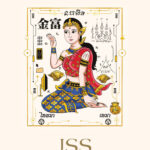Directions: The Pa Auk meditation centre just outside of Yangon is a branch centre of the main monastery in Mawlamyaine, the capital of Mon State in the South. From downtown Yangon, you can get to it by taking Bus no.217 or no.213 from the bus stop close to the junction of Mahabandoola Park Street and Mahabandoola Road – the buses will be going away from the direction of Sule Pagoda. The name of the city is Payagon in Thanlyin. Payagon is a small city but obviously the driver of one of these buses should be familiar with it. When you get off, it’s a fifteen minute walk to the Pa Auk centre. It won’t be easy to find without help, but just keep going around saying ‘Pa Auk’ (pronounced ‘pa’ as in party and ‘au’ as in ow! it hurts) and somebody will no doubt kindly show you the way.
What’s there: The temple itself is a modestly-sized meditation centre, that caters mostly for Burmese laypeople who wish to study Pa Auk’s teachings. The abbot speaks English, but is often away. Besides him, there is an Irish nun who has been at the temple for many years and can speak fluent Burmese. There are plenty of places for meditators to stay and also small shop that sells white clothes, timers, washing powder and anything else that the meditator might need. The place is quite nice and the laypeople around are very helpful and welcoming, but everybody there keeps saying that, if you have time, you should really go to the head monastery in Mawlamyaine.
What I find out: I was lucky enough to be there at the same time as the abbot the Malaysian branch of the Pa Auk temples. He spent over an hour answering some questions I had about their meditation technique. Amongst other things, he explained why we see ‘light’ in the mind’s eye when focusing on one thing for a long time. This is because all things are composed, according to Buddhist teaching, of ‘particles’. These particles are constantly moving about. For example, your body generates heat particles all the time. Also, when you will to do something with your conscious mind, you also generate these particles. However, your mind is usually distracted and flitting from one thing to another, so it does not discern these particles. Once one is in a high state of samatha concentration however, the mind generates a lot of particles and is sensitive and undistracted enough to perceive them.
The teacher did not believe that one – or, at least, me – could achieve a high state of samatha meditation as a beginner without going for a prolonged retreat of intensive meditation and guidance in a peaceful atmosphere. He also thought that it was not advisable for a meditator to practice the Four Elements meditation (you can find out how to practice this and other Pa Auk meditations by downloading the handbooks at their website below) without daily guidance.
Mahasi versus Pa Auk: I was curious to find out what a Pa Auk meditation master had to say about the Mo Kut, Goenka and Mongkul methods, all of which originate in Burma and which have attained popularity throughout the world. While ‘not wishing to condemn’ these meditation methods, he said that he believed that they were ‘not perfect’, not really samathi techniques and not really vipassana. He said that he, like his teacher Pa Auk, had tried the Mahasi and Goenka methods amongst others and found them unsatisfactory. Pa Auk went back to the original Pali texts to try to reclaim the true meditation techniques of the Buddha. He looked chiefly at the Abhidhamma, the Visudhimagga and the Mahapattanasati Sutra. He then devised a very elaborate and systematic system that incorporated elements from all these classic Pali texts. For instance, the Mahapattanasati Suta (the Great Discourse on Developing Mindfulness, the main reference for what constitutes meditation for the Thervada school) teaches the need to develop knowledge of the four elements. What this might mean is elaborated upon in the great commentary by the 5th century scholar-monk Buddhaghosa, the Visudhimagga which lists various ‘qualities’ for each element (for example, ‘water’ has the qualities of: flowing, cohesion) which the meditator should come to know through direct experience in meditation, gradually piercing through to the ultimate reality of phenomena through being able to astutely differentiate their constituents. This, according to the teacher I spoke to, is neglected entirely in the Mahasi and Goenka traditions. Meditators are instead asked to focus on a sensation, label it and watch it pass away. According to Pa Auk, these meditators lack the necessary skill, the necessary knowledge of what the ultimate constituents of sensation, consciousness and feeling are to be able to discern their ‘ultimate realities’. Also, because they are always moving their concentration from one sensation to the next, they never develop real strong anapannasati concentration which can lead to attainment of one of the jhanas (meditation levels). According to the teacher, one can reach great peace and wisdom with the other methods, but will not be able to reach the higher levels of attainment.
The Mahasi-affiliated schools of meditation, of course, see things differently and are just as virulent in disparaging the Pa Auk method. More on this later.
For more information: www.paauk.org







